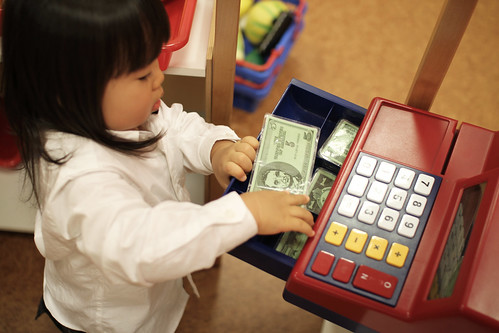Most people can remember a
time in their childhood when they truly wanted an item and had to save up for
weeks or months in order to purchase it. Your children should be able to learn
the same lesson by slowly saving up for important items they desire. For young
children, this might be a new toy or a video game, while for teens this could
be a new car or even savings for their college education. Although it can be a
struggle at times to help children want to save rather than spend their money,
it can help them to be more fiscally responsible later in life. Here are some
easy strategies to help your children save money.

1. Start a Savings Account: It might seem unnecessary to start an account for young children or those who are only saving minimal amounts of money. However, this is an important step to understanding saving and also understanding personal finances. Most banks allow children and their parents to start a bank account with no fees and a minimum deposit of anywhere from $20 to $100.
2. Have a Goal: Saving
just to save is not beneficial for children or enjoyable. Most will need some
kind of goal to work towards. Carefully consider what might be a good thing to
begin saving for. It doesn't need to be something big. In fact, it is a great
idea to start with something that can be purchased after saving for just a few
weeks. After realizing how helpful savings is in order to make a larger purchase,
you can start suggesting more and more expensive items.

3. Visible Reminders to Save: The reason children struggle with saving is that they prefer instant gratification to something that is delayed and might take months or years. To help them deal with this, make some visual reminders to show them what they are saving for. You might clip out the ad for a new video game or bicycle they want, or for bigger items make a collage on their bedroom wall to remind them of what they are working towards.
4. Percentages of
Allowance: Since most children don't have any jobs or way to make money
outside of the home, money will come primarily from the parents. If you give
them an allowance each week, set aside a certain amount for savings. This might
be nonnegotiable or merely suggested, depending on your own personal parenting
opinion. For example, if allowance is $10 per week, you might mandate that at
least $1 goes into the savings account, but beyond that children will use their
own discretion.
5. Track Spending: Have
your children track their spending over the course of a month. Once they see
how quickly money is spent on small items like comic books and candy, they may
be more inclined to save up for more serious items.
By following these tips it
will be easy to help children start saving and become more aware of their own
personal finances.
Author Tanya Mitchell is a budget consultant and writes for Saving Up, a site which lets you compare savings accounts and get the highest possible interest for your hard earned money.
